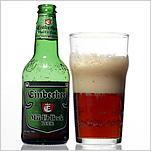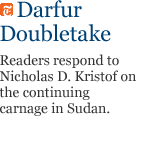There is a framed advertisement on the wall outside the office of Marie-Francoise Stouls at the fashion temple Le Bon Marché. The ad bears the tag line for the store’s beauty department, which Stouls runs. It reads, “Refuser les seconds roles,” which, in a world that rewards the increasing mass-ification of perfume, amounts to a pledge to support the singular and the exquisite. Not an easy job.
Stouls is both remarkably modest and disarmingly attractive, a stylishly thin woman of a certain age with a flattering haircut and perfect professional élan. She wears a navy Anastasia skirt on the day I see her (“I have the same one in white,” she says) and pearls (“The short collier is real, the longer strand is fake”). She has no Suzy Menkes trademark nor Anna Wintour hauteur but is possessed of a serious and bold demeanor that seems slightly remote.
The remoteness is a function of shyness — after a few moments Stouls is quite warm — and the boldness is understandable. Le Bon Marché, in Paris’s Seventh Arrondissement, is the city’s most exclusive department store. It is also the only one of its kind in the world, making Stouls’s job a demanding one. The department is still evolving from where it was in 1984, when the store was bought by Bernard Arnault, who invested hugely over the next 15 years. Andrée Putman redid the central escalator under the glass roof, which was designed by Gustave Eiffel, but the major change was the creation in 1998 of Stouls’s Le Théâtre de la Beauté, which required the removal of a giant swath of two entire floors to open a vast interior space.
“It was like giving birth,” Stouls says. “We revisited everything, started from zero, cut 30 percent of our brands.” Then she began rebuilding according to a philosophy articulated by Séverine Merle, the store’s commercial director: “We must be prescriptive. That is our role.” Stouls plays her prescriptive role for the client du quartier: generally younger than 35 and apt to live on the Left Bank, read Le Monde and visit the store at least once a week. “She comes for brands she sees in the press and those she doesn’t know.”
Because of her position, Stouls occupies a kind of throne in the perfume world, and her most ardent suitors are the niche perfumers, whose scents she has come to rely on. Recently, she says, she had meetings with seven brands in one day, all clamoring for shelf space. Indeed, I first saw her boarding a flight in Florence, where she had been scouting new brands at Fragranze, the niche scent show. I was with Marc-Antoine Corticchiato, the creator of Parfum d’Empire, who caught a glimpse of her and froze in his tracks.
Lately, Stouls is in love with Oha, a sublime dark rose by Téo Cabanel, the tiny French house that was founded in 1893 and recently relaunched. She is excitedly awaiting Vicas, the latest vintage reissue from Robert Piguet, which owns Fracas and Bandit. At first Stouls wasn’t sure about the niche line Divine: “I didn’t really get it.” But after speaking with Yvon Mouchel, Divine’s owner, she tried L’Homme Sage again and loved it. “We launched this past Christmas,” she says. “Not an explosion.”
She’s had one of her biggest successes with the English perfume house Miller Harris, run by Lyn Harris, who made a bespoke scent for the actress Jane Birkin that she subsequently marketed as L’Air de Rien, a neo-brutalist scent of leather and smoke. “We sold 200 pieces in less than two months,” Stouls says. “The word of mouth on it has been incredible.” Although, she admits, pursing her mouth ruefully, “I can’t wear it.”
Which doesn’t mean that Stouls ignores the big luxury brands — Thierry Mugler, Issey Miyake, Cartier, Armani. “We won’t permit ourselves not to carry them,” she says. Le Bon Marché is the only point of sale for Jo Malone in France and has given the brand pride of place, right next to the escalator; to the surprise of an American like me, Jo Malone — like Kiehl’s, which she added in 2002 — is considered superluxury in France.
The fact that she carries a phenomenally inferior luxury scent represents, shall we say, certain commercial constraints (supplier relationships, the politics of keeping brands happy) under which she must operate. I told her I considered one commercial brand that she sells to be entirely cynical, and Stouls gave her buyer Marie Lassagne Abric a significant look and said, “That’s what we told them when it came out.”
Stouls also offers some wonderful classics. You can find Cabochard by Parfums Grès, which smells like the ultrabourgeois Eighth Arrondissement in 1959, as outmoded as a powdered wig but a thrill to come upon. Ditto for Arpège (a classic iris), Bal à Versailles and Vent Vert (which smells like a tornado ripping its way through a nursery of maple saplings on a freezing day in early March). You can also buy Ma Griffe by Carven, a terrific vintage scent that instantly confers a retro chic on anyone daring enough to wear it.
For years, Stouls, who was born in Rouen and who started as an intern in the children’s department in 1978, wore L’Air du Temps. But she says with a huge smile, “I’ve been very unfaithful.” She had a huge coup de coeur when Angel came out but has trouble wearing it today. She’s worn Annick Goutal’s Eau d’Hadrien (Goutal is the store’s fifth-best-selling brand) and Mûre et Musc by L’Artisan Parfumeur. “Currently,” she says, “I’m wearing Lime Basil by Jo Malone. Je l’adore!” She thinks she’s a bit of a traditionalist. And a bit of a pessimist. “When you look at the market today, so many things have no soul. Our clientele has little desire to wear these things that all smell like each other.” And yet Le Bon Marché’s top sellers reflect a predictable French hierarchy: Guerlain, then Jo Malone, Herme’s and Chanel.
Though she works entirely by instinct (“I just love it,” she’ll say), Stouls does not always guess right. Ralph Lauren “has never taken with us,” she explains. (Except for Safari: “We’ve developed a clientele for it.”) “I loved the Andrée Putman perfume, the concept, everything, and it didn’t work.” She also loved Helmut Lang’s cologne. “A superb mixte perfume” — the word for “unisex” in France — “and it didn’t work.” She corrects herself: “Actually, we sold it very well,” but the brand disappeared. On the other hand, the designer Serge Bensimon’s Cologne 1993 started off well and now “just isn’t asked for anymore.” She sighs.
In front of the Annick Goutal stand, she sprays Eau d’Hadrien on a blotter and hands it over, adding, “Personally I love Ce Soir Ou Jamais — so floral, so deep, so. . . .” She searches for the right word. “I don’t know. I couldn’t tell you. I just love it.”















